Garden Rule Number One: Nate Doesn't Work...
...and Nate will work really hard to uphold rule number one.
As a kid, I always loved driving by monocropped fields with their trippy eternal rows of green with brown soil between them. I imagine everyone else did too. But then we all grew up and learned about permaculture, right? How monocrops are bad and how straight lines are usually bad too.
A couple weekends ago, we got down our chicken run and coop after culling our few remaining birds. The goal was to clean out and start over this spring with a clean slate and no chronic respiratory disease. That's still the plan but the next coop and run will be in a different place. Since this area was heavily worked by the last two flocks, this soil her is extra rich in organic matter and nutrients. I wanted to put a garden here this year.
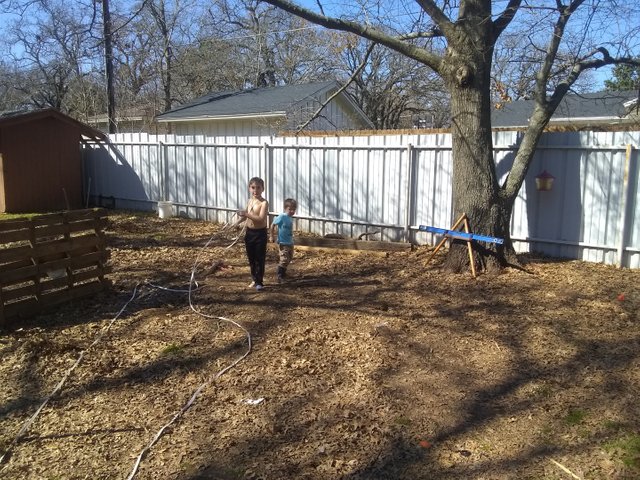
Old chicken run area, before preparing the plot.
Being so excited about my corn ventures this year, that's what I decided to plant there. I'll be trying two types of flour corn: painted mountain and Hopi blue corn. Painted mountain is reportedly bred to be a freeze hardy, cold and heat tolerant heirloom variety, so I decided to test that out with a late winter planting. Our official last frost date is mid April, two months away, so this is an ambitious project for me. After inquiring on a Facebook grower's group, I found one person that grew painted mountain corn and had a freeze with zero crop loss. She said "the leaves died, but it grew new ones and kept on trucking."
Straight lines are bad, remember? So my corn rows have to be on contour. Small swales would be perfect, and I'd been wanting to put in more swales to slow more water. This makes a good excuse to do so. These swales aren't big. A shovel head deep and wide, and they won't be used like the big swales where I harvest compost. These ones will just be like this and be left alone.
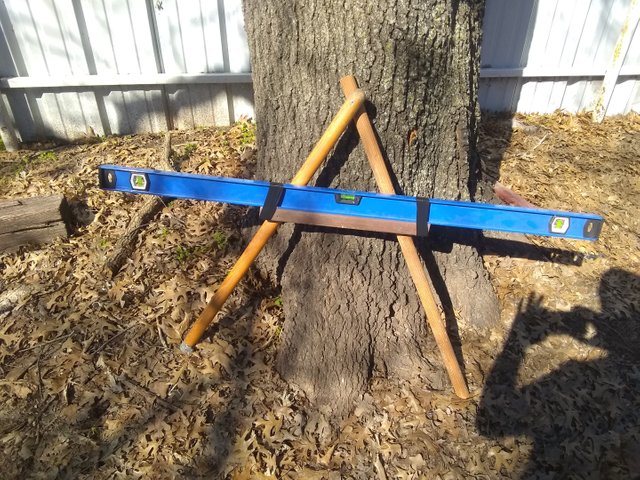
A-frame level for marking contour.
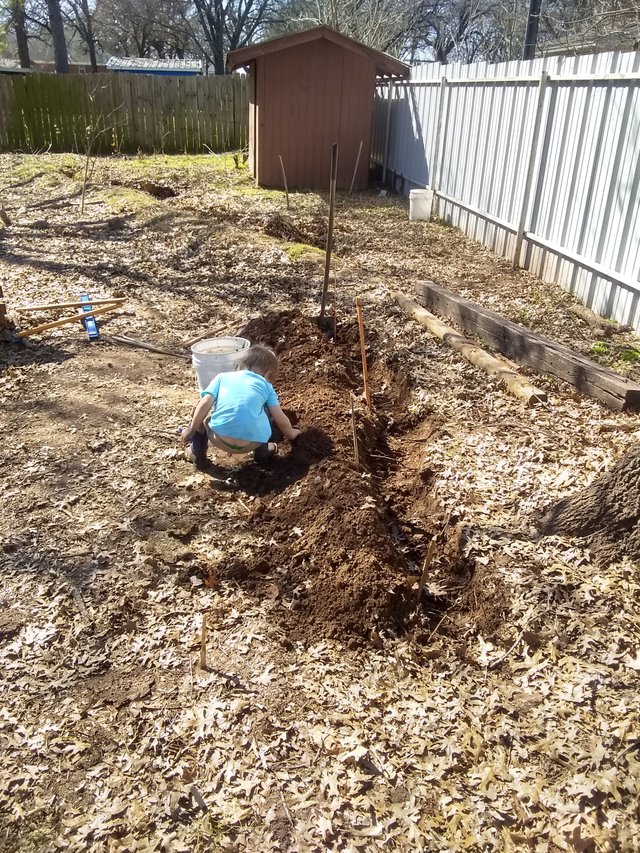
Sawyer "helping" by planting more acorns. Because more oak trees is definitely what we need.
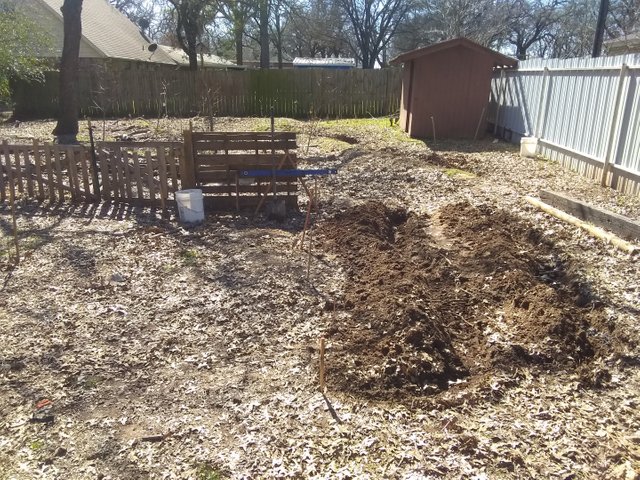
Two swales and rows.
Once I dug the four swales, it was time to plant. Last year I tried a hybrid sweet corn for my first try at corn. I failed hard because it was very haphazard and unplanned. What few stalks managed to resist being dragged down by beans and squash had the ears eaten out of them by corn ear worms. This year I wanted to do a bigger plot of corn, so I ordered a half pound bag of each variety. Last year was just one small pack of seeds.
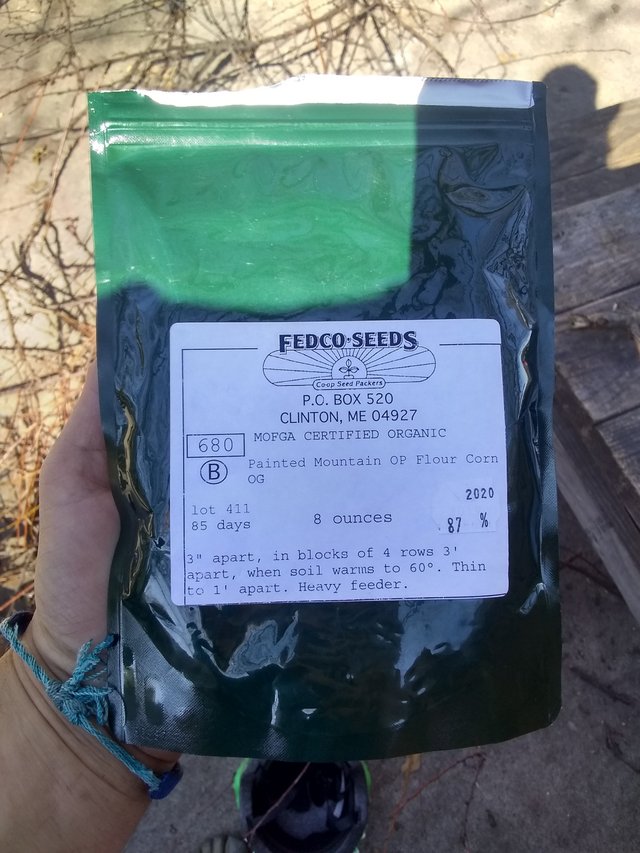
Eight ounces of corn is a lot of corn.
It says blocks of four rows, three feet apart, so I started the swales three feet apart. Contour demanded that they didn't stay three feet apart, which I bet will be fine. Four twelve foot swales gives 48 feet of new swales dug today. Hooray for improving soil conditions! The contoured rows are good because they'll reduce the need for watering by catching and slowing water. Less work over time, so I can fulfill my destiny as a lazy gardener.
I can't plant the two corns together, as they'll hybridize and I intend to save seeds from these if they grow well. These two types are heirlooms and very special to me. The Hopi corn is an ancient variety that has deep cultural roots somewhat close to here. I chose it because it is the one that I found that was traditionally grown closest to here on my homestead. An adapted variety with a strong sense of place. The painted mountain is frankly beautiful, and a fun project that will have great reward if it works out. If it goes well, I may be able to grow it through the fall as well, for two plantings. I doubt I'll attempt that with the Hopi corn, I'll just grow it all as one big patch after the painted mountain is done pollinating.
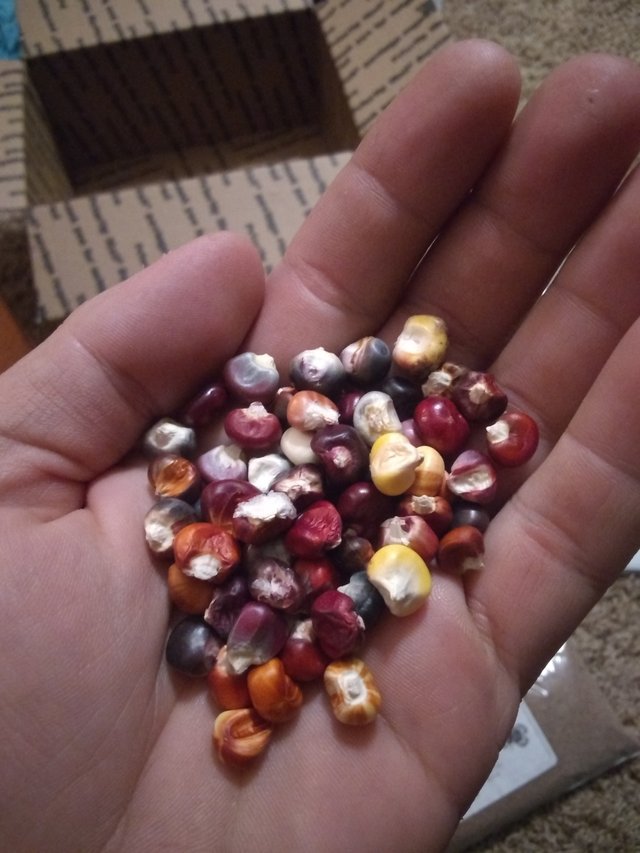
Painted mountain corn seeds. They're mesmerizing.
The goal this year is to replace some of my industrial grain consumption. I'd like to have a good, high producing storage crop of grains for flour, so I picked two flour corns. The Hopi corn can also be picked early and eaten on the cob as an almost sweet corn. I'm also going to grow a patch of mammoth gray stripe sunflowers and Hopi red dye amaranth as other grain crops. Two more ancient native American staple crops that will get planted probably in April.
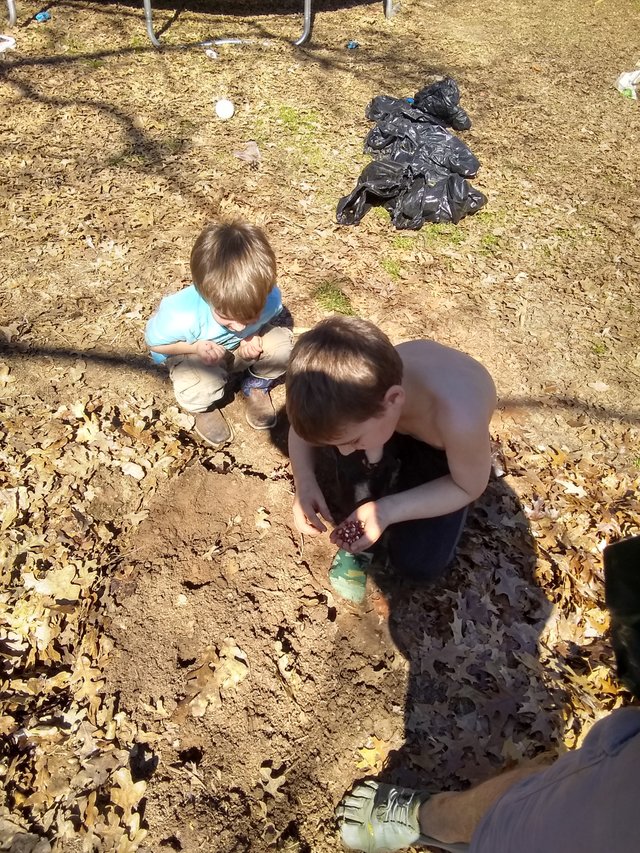
The boys helping plant corn. I poked holes, Sam put in seeds, and Sawyer covered them up.
Of course, no Swale counts without mulch and some kind of other weird experiment, right? I used a couple bags of natural charcoal that I'd left out in the rain over the course of the summer and put them in the swales. Biochar or something like that. And I added two half-burnt logs from the fire pit. That way they'll act like half biochar, half hugelkultur logs as the leaves break down into soil and bury them. They'll hold water and provide places for nutrients and soil biology to be.
I planted a good bit of crimson clover on the rows as well to fertilize the soil with nitrogen and to provide pollinator food and medicinal tea for us. Function stacking is fun.
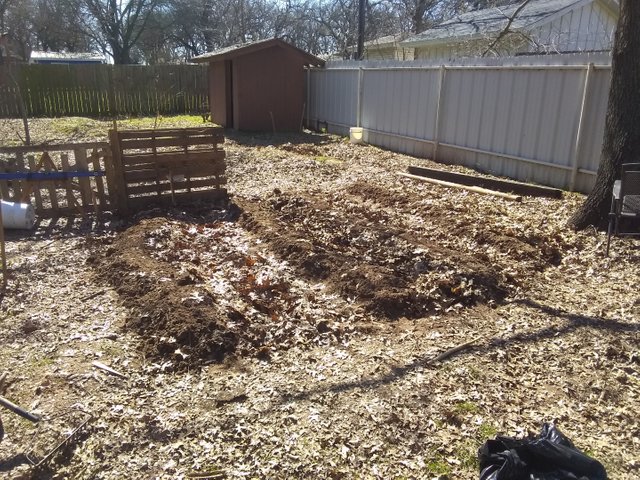
Prepped, mulched, and planted.
Tomorrow I'll prep another bed, but I'll plant it later, so as to stagger the harvest and avoid catastrophe if the weather gets too cold and the corn doesn't hold up to it's reputation. Not putting all my eggs in one basket with this one, I'd prefer a degree of success.
Some folks might consider this a lot of work. I don't. It'll grow me good food and reduce the work that I'll need to do later, so I don't mind a warm shirtless afternoon in the sun. That kind of activity has its own immediate benefits too, which help me consider digging fifty feet of small trench to not be "work." I started around eleven this morning and finished up about half past one, with a long lunch break for local pork chops. So it was maybe an hour and a half from first shovel stroke to seeds in the ground.
After that, I did an hour of welding for friends to fund some fertilizer and pest control measures (and maybe some more seeds?) and then started demolishing the well house. A busy and productive day with beautiful weather! We're loving these gorgeous weekends lately. It rained all week while I worked overtime, so the rain tote is full and the soil is soft. Folks cry about rain all the time and pray that it'll stop and I'm over here like "bottle up your rain and I'll take it to my place." I'm afraid if I bitch about rain I might actually stop lol
Tomorrow's another pretty day with more springtime projects! Hope y'all's weekend was good too, thanks for checking in. 💚
All action for the good of all.
Nate.
Recent projects:
Sustainable Volunteering
The Holistic Church
Permaculture Chickens Fundition
In the words of Joel Salatin, "do something!" Order seeds from SeedsNow using my affiliate link!

Purchase sustainably produced seeds, textiles, medicines, and more for SBD from @homesteaderscoop at The Homesteader's Co-op Online Marketplace!

Follow @naturalmedicine and join the Natural Medicine discord channel today and come grow and learn with us!
Hello!
This post has been manually curated, resteemed
and gifted with some virtually delicious cake
from the @helpiecake curation team!
Much love to you from all of us at @helpie!
Keep up the great work!
Manually curated by @rem-steem.
@helpie is a Community Witness.
Oh, lovely! A Farmer Sam photo! :)) It's really great the kids are so involved with the work outside. :))
Sure sounds like a really productive day! I've loved the look of Painted Mountain and Glass Gem corn. But corn takes so much room, and the raccoons are so much more adept at harvesting just before I do...it just isn't worth it.
Yeah, BT will help with the worms, but I'm afraid of raccoons now for sure. I can't get corn out of my head for some reason lol
Glass gem is gorgeous, but I had a hairbrained idea when I read the description on painted mountain being made for weird climate circumstances and observing exactly that around here lately, I couldn't help myself.
Actually, when I read plant descriptions, that is exactly what I look for first, besides disease resistance, then I look at the review on flavor and storing abilities, if applicable.
Yeah, the raccoons were just more than we wanted to deal with... We'd tried a lot of things to deter them, none worked.
I can't believe you are planting corn all ready!
Is your ground all warmed up already? We're still in the deep freeze although I'll be starting some seeds indoors soon to get a jump on the gardening season!
Wonderful choice of grain plantings!
Happy gardening!
Maybe I'm crazy! We'll find out soon lol
If it works though, we may have fresh corn flour as early as May! Just after the normal time to start planting corn lol
Soon will be time for making more corn blocks. Seeing how many seeds I have, I'm gonna try a reeeealy big one for the Hopi corn. Maybe ten or twelve rows this size for another 120 feet of microswales!
Sorry things didn't work out with the flock. Growing in the area is such a great idea all around, though. In addition to the fertiliser for the plants, the plants and growing season will help get rid of the chicken diseases from the soil.
Look forward to seeing that corn in the near future!
Meee toooo! I was daydreaming with my friend earlier on break about how we might have homegrown corn tortillas before long.
How long do you figure it'd take for that stuff to work out? Something I hadn't really looked at. We were thinking of getting the new birds soon, as everything's had some good time in the sun without a host.
That's a good question. I guess it depends on how long it can live outside of a host. Past experience had taught me to err on the cautious side. You don't want to Gerry new birds, then go down the same path.
It must be nice to be digging in the soil in the middle of February! We still have about 2 feet of snow on the ground, and the dirt won't be workable until some time in April around here.
I've grown Painted Mountain corn for the past 2 years and had good luck with it. It's pretty durable corn. It was developed in Montana for adverse conditions. I believe that you can eat it like sweet corn if you catch it in the milk stage, but it won't be as sweet as sweet corn.
If the seeds don't sprout in the ground because the ground isn't warm enough yet, you can start the plants indoors and then plant them after they're up to about 4-6 inches.
My Painted Mountain stalks got about 5-7 feet high, there was a range of heights. You'll get different colored stalks with the corn, mostly green or red stalks. It's really interesting stuff. It's an early maturing corn, so that might help with 2 crops where you live.